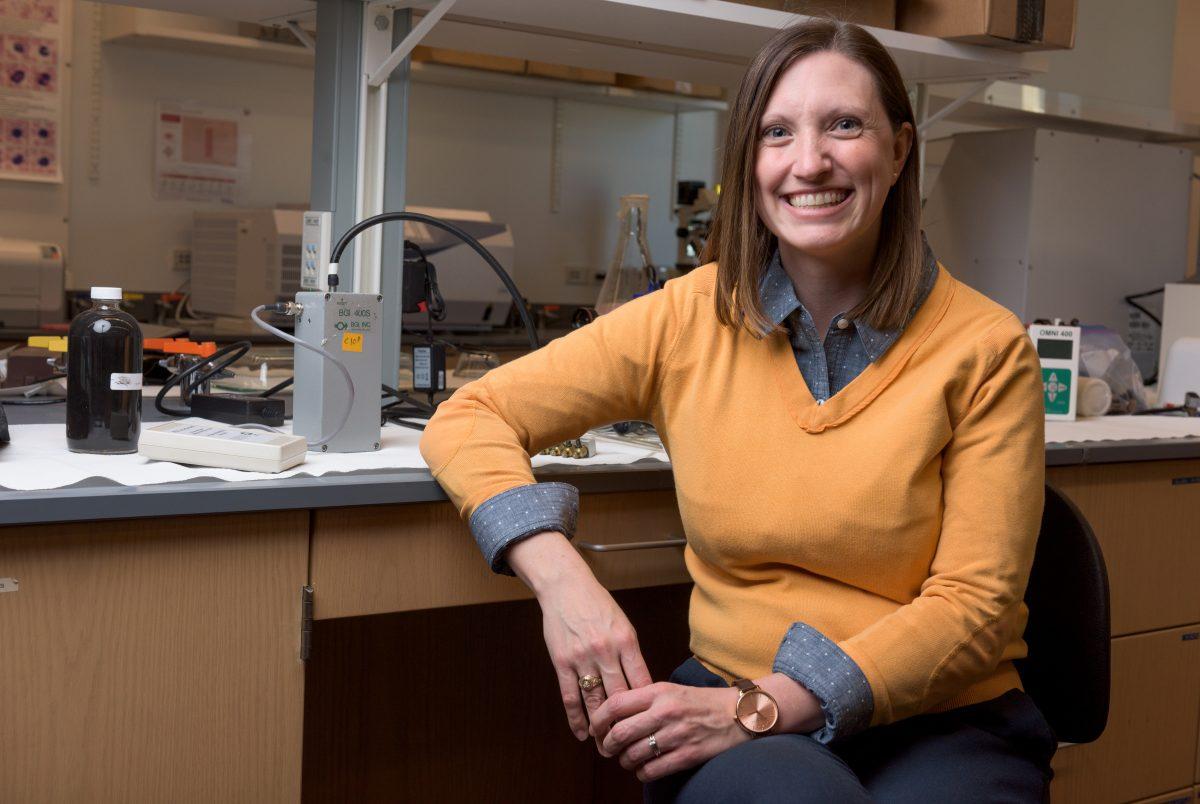Examinations of prenatal pollutant exposure are progressing as a Texas A&M School of Public Health assistant professor has received an extensive grant.
The National Institutes of Health has awarded Natalie Johnson with the Outstanding New Environmental Scientist Award (ONES). This award is intended to recognize early stage investigators and provides Johnson with around $2 million for her research. ONES is a standard Research Project Grant (R01) award for five years, and contains a career development component that allows external advisors to guide Johnson throughout her project and career.
After receiving her undergraduate degree in biology from A&M in 2006, Johnson received a Ph.D. in toxicology through A&M’s College of Veterinary Medicine and Biomedical Sciences in 2010. During her doctoral candidacy, Johnson said she established an interest in food toxins and air pollutants.
“I was working with a population in Ghana that primarily burned wood for cooking and heating their homes,” Johnson said. “We were measuring biomarkers of exposure to air pollutants and seeing really high levels from this wood burning. My Ph.D. work got me interested in going into public health, so I went to the Johns Hopkins School of Public Health for my postdoc fellowship.”
Back at A&M, Johnson runs a lab where her research is conducted via two methodologies: exposure characterization and animal models.
“I joined the faculty here at the School of Public Health in 2013 and I’ve decided to dedicate my research program around prenatal air pollutant exposure,” Johnson said. “One side of the lab is where we characterize exposure. The other side is where we have developed an animal model. The new grant is going to build off of that preliminary data, and we will look at how prenatal exposure causes respiratory dysfunction in children later in life.”
Having her own children is what Johnson said inspired her to study pollutant exposure. According to Johnson, a study reveals that moms who have a polymorphism in a specific transcription factor, Nrf2 – a master regulator of antioxidant response – are more likely to have children susceptible to respiratory tract infections.
“What can you do if a mom lives in a city that is heavily polluted?” Johnson said. “We’re going to be using sulforaphane, the derivative from broccoli sprouts, and we’re going to be supplementing the maternal diet with that. We’re going to see if we can offer some sort of protection to reduce the oxidative stress and hopefully reduce the fetal susceptibility to these infections. I’m excited, because right now, as a mom myself, you want to know what you can do when you’re pregnant to have the healthiest pregnancy.”
Johnson’s lab uses mice to study air pollutants. Once the mouse pup is delivered, they are challenged from zero to four weeks with dust mites, which is a common human allergen.
“What we found is the mice that were prenatal exposed to the particulate matter air pollution mixture could not mount as strong a response to the house dust mite as those exposed to the filter air control,” Johnson said. “What we think we have is this window of immune suppression where now the mice might be more susceptible to developing respiratory infections. This new grant is going to now merge the prenatal exposure model with an infant exposure to respiratory syncytial virus, which is one of the leading causes of childhood hospitalizations.”
Johnson said she hypothesizes that there is a mechanism caused by an immune system developmental reprogramming driven through T cells.
“We’ll see now if they are more severely impacted by the respiratory virus compared to the filtered air control,” Johnson said. “We’re looking at how T lymphocytes are regulated. If they are suppressed, is that what is causing this increase viral severity? In human literature, you see moms living closer to freeways or polluted areas, they tend to have kids that go in for more frequent respiratory infections.”
Johnson said she credits her love of A&M to the students she has been fortunate enough to work with, including Kristal Rychlik, Class of 2010, who graduated with a Bachelor of Science in biomedical science from A&M. After graduation, Rychlik received a Ph.D. in toxicology, with Johnson as her principal investigator. For her dissertation, Rychlick developed a model of prenatal exposure to fine particulate matter air pollution in mice.
“Unfortunately, environmental exposures such as air pollution are becoming commonplace, and vulnerable populations such as pregnant women and young children are particularly susceptible to this type of toxicant,” Rychlik said. “Dr. Johnson’s research can not only inform us as to the levels pregnant women are truly being exposed to but also reveal mechanisms governing long-term effects after those exposures.”
In addition to students, Renyi Zhang, atmospheric sciences professor, is also working with Johnson on her research. Zhang has aided in the development of chambers where the mice are exposed and helps in examining how fine particulate matter can influence immunosuppression.
“It is an exciting collaboration that involves interdisciplinary methodologies,” Zhang said. “Hopefully [Johnson’s] grant will make major advances in understanding the effects of air pollution on human health. Air pollution represents the greatest risk to human health, since exposure to fine particulate matter has been identified as the cause of more than three million premature deaths a year worldwide. This project will generate new knowledge to inform society of health risks associated with air pollution.”
Johnson awarded $2 million grant
February 25, 2018
Photo by Texas A&M University Health Science Center
Public Health assistant professor Natalie Johnson uses both exposure characterization and animal models to conduct her research.
Donate to The Battalion
Your donation will support the student journalists of Texas A&M University - College Station. Your contribution will allow us to purchase equipment and cover our annual website hosting costs.
























